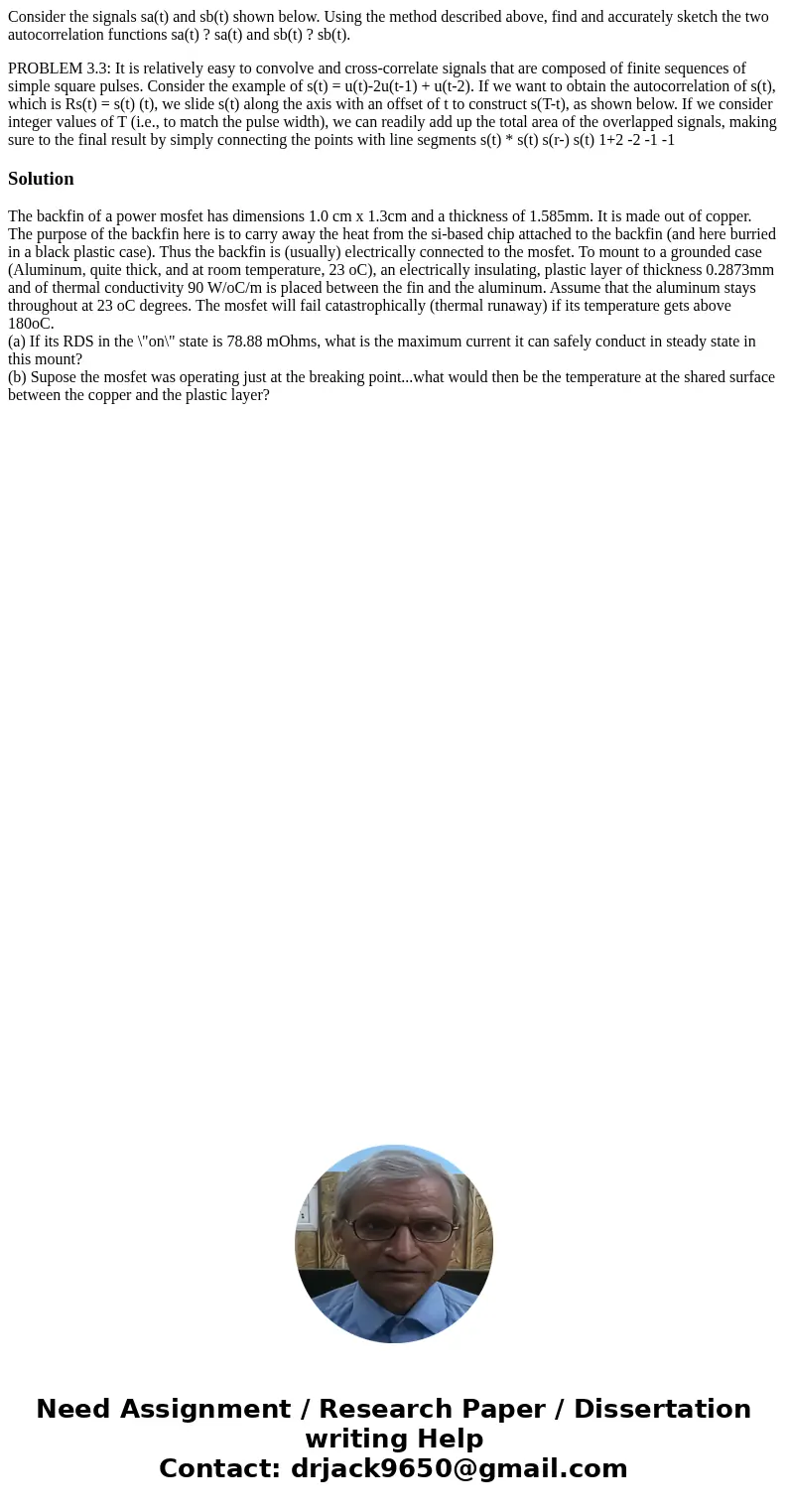Consider the signals sat and sbt shown below Using the metho
Consider the signals sa(t) and sb(t) shown below. Using the method described above, find and accurately sketch the two autocorrelation functions sa(t) ? sa(t) and sb(t) ? sb(t).
PROBLEM 3.3: It is relatively easy to convolve and cross-correlate signals that are composed of finite sequences of simple square pulses. Consider the example of s(t) = u(t)-2u(t-1) + u(t-2). If we want to obtain the autocorrelation of s(t), which is Rs(t) = s(t) (t), we slide s(t) along the axis with an offset of t to construct s(T-t), as shown below. If we consider integer values of T (i.e., to match the pulse width), we can readily add up the total area of the overlapped signals, making sure to the final result by simply connecting the points with line segments s(t) * s(t) s(r-) s(t) 1+2 -2 -1 -1Solution
The backfin of a power mosfet has dimensions 1.0 cm x 1.3cm and a thickness of 1.585mm. It is made out of copper. The purpose of the backfin here is to carry away the heat from the si-based chip attached to the backfin (and here burried in a black plastic case). Thus the backfin is (usually) electrically connected to the mosfet. To mount to a grounded case (Aluminum, quite thick, and at room temperature, 23 oC), an electrically insulating, plastic layer of thickness 0.2873mm and of thermal conductivity 90 W/oC/m is placed between the fin and the aluminum. Assume that the aluminum stays throughout at 23 oC degrees. The mosfet will fail catastrophically (thermal runaway) if its temperature gets above 180oC.
(a) If its RDS in the \"on\" state is 78.88 mOhms, what is the maximum current it can safely conduct in steady state in this mount?
(b) Supose the mosfet was operating just at the breaking point...what would then be the temperature at the shared surface between the copper and the plastic layer?

 Homework Sourse
Homework Sourse